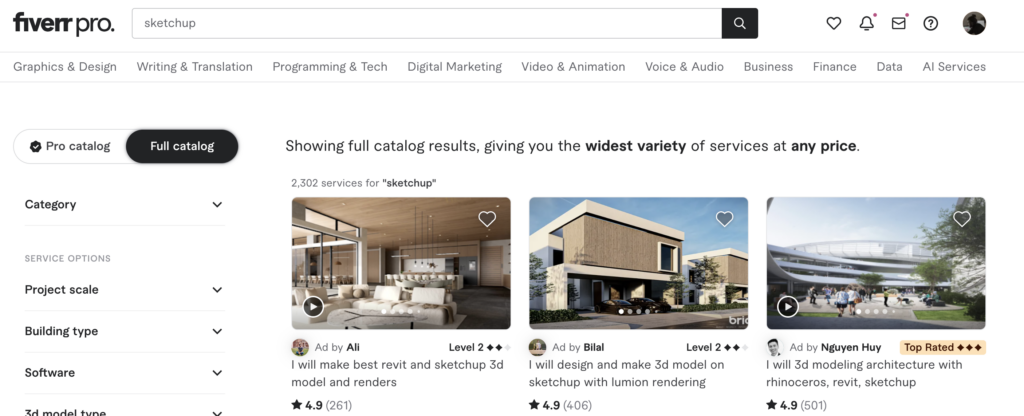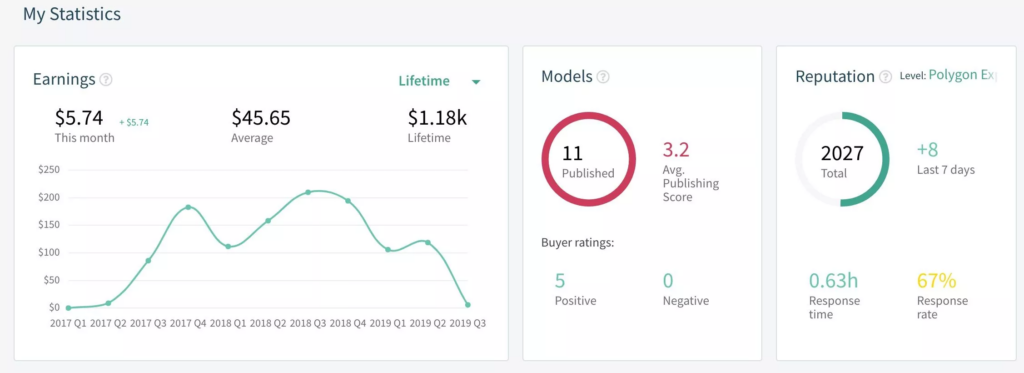SketchUp is a powerful and intuitive 3D modeling software used by architects, designers, and hobbyists worldwide. Whether you’re a professional or a skilled enthusiast, you can turn your SketchUp skills into a lucrative source of income. In this blog post, we’ll explore several ways to monetize your SketchUp expertise, helping you unlock new opportunities in the world of 3D design. Let’s dive in!
1. Freelance 3D Modeling Services
One of the most straightforward ways to make money with SketchUp is by offering freelance 3D modeling services. Various industries, including architecture, interior design, engineering, and game development, require high-quality 3D models. Here’s how you can get started:
- Create a portfolio: Showcase a variety of models that demonstrate your range of skills, from simple objects to complex architectural designs. Use platforms like Behance or Dribbble to display your work.
- Join freelance platforms: Sign up on platforms like Upwork, Freelancer, or Fiverr, where clients regularly post projects requiring 3D modeling skills. You can set your rates and start working on various projects almost immediately.
- Network with professionals: Reach out to local architects, builders, or design firms who may need assistance with 3D visualization. LinkedIn is a great platform for networking and showcasing your skills to industry professionals.

Potential Earnings: Depending on your experience and the complexity of the project, you could charge between $25 and $100+ per hour.
2. Design Custom 3D Models for Sale
If you prefer passive income, selling pre-made 3D models is an excellent option. Many individuals and businesses need custom designs for marketing materials, prototypes, or construction plans. You can create a variety of models and sell them online through digital marketplaces.
- Choose a niche: Focus on specific categories, like furniture, home decor, or urban planning models, to attract buyers with specialized needs. Consider visiting websites like Houzz to explore trending design styles.
- Sell on platforms: Websites like SketchUp’s 3D Warehouse, TurboSquid, and CGTrader allow you to upload your models and earn revenue every time they’re downloaded. Each platform has its own audience, so it’s worth exploring multiple options to maximize exposure.
- Offer different file formats: Convert your SketchUp models to formats like STL or OBJ to reach a broader audience. These formats are commonly used in industries such as 3D printing and game development.
Potential Earnings: Top creators can earn anywhere from $100 to over $1,000 per month, depending on the demand for their models.

3. Create and Sell SketchUp Plugins
If you have coding skills or are willing to learn Ruby (the programming language used by SketchUp), you can develop plugins that enhance SketchUp’s functionality. There is a growing market for plugins that streamline workflows, improve rendering, or add new features to SketchUp.
- Identify gaps in the market: Research existing plugins in SketchUp’s Extension Warehouse and find ways to address common pain points for SketchUp users. Whether it’s improving navigation or automating repetitive tasks, useful plugins always have a market.
- Develop and sell on Extension Warehouse: Once your plugin is ready, you can sell it on SketchUp’s Extension Warehouse or on third-party sites like Gumroad and CodeCanyon.
- Offer updates and support: Providing regular updates and customer support can boost your sales and help you gain loyal customers who trust your expertise.
Potential Earnings: Depending on the complexity and usefulness of your plugin, you could sell it for $10 to $100 or more per license.
4. Provide SketchUp Training and Tutorials
If you’re an experienced SketchUp user, sharing your knowledge can be a great way to make money. Many people want to learn how to use SketchUp for personal projects or career advancement, and they’re willing to pay for expert guidance.
- Create online courses: Platforms like Udemy, Skillshare, and Coursera allow you to create and sell SketchUp courses. Focus on different skill levels (beginner to advanced) and specific industries. Consider creating tutorials on advanced rendering techniques or SketchUp for specific professions like architecture or interior design.
- Offer private lessons: You can teach one-on-one or group classes, either in person or via video calls, offering personalized guidance to those looking to master SketchUp.
- Monetize YouTube tutorials: Start a YouTube channel where you post free tutorials and monetize through ads, sponsorships, or Patreon subscriptions. Channels like The SketchUp Essentials have successfully built a following by offering valuable content to their audience.
Potential Earnings: Instructors on Udemy and Skillshare can earn between $500 to $5,000 per month, depending on their course’s popularity and the number of students enrolled.

5. Offer Rendering Services
SketchUp, combined with rendering plugins like V-Ray or Enscape, allows users to create photorealistic images of their models. High-quality renderings are in high demand for marketing presentations, client proposals, and architectural visualization.
- Specialize in rendering: If you excel at turning SketchUp models into stunning visualizations, offer rendering as a standalone service. Showcase your work on platforms like ArtStation.
- Create photorealistic visuals: Focus on details like lighting, texture, and materials to create compelling and professional renders that can impress potential clients. Check out tutorials on CGArchitect to refine your skills.
- Work with architects and designers: Many professionals need renderings for their projects but don’t have the time or expertise to do it themselves. By offering high-quality renderings, you can collaborate on a variety of exciting projects.
Potential Earnings: Rendering services can range from $100 for basic visuals to over $1,000 for high-end, detailed renders.
6. 3D Printing Services and Prototyping
SketchUp’s ability to export models to 3D printing formats opens another revenue stream: offering 3D printing services. You can design models specifically for 3D printing or offer prototyping services for clients.
- Create 3D-printable designs: Offer designs ready for printing, such as home decor items, tools, or gadgets. Visit Thingiverse for inspiration on popular 3D-printable models.
- Partner with local businesses: Offer to help businesses design prototypes or small-batch products. Many small manufacturing or tech firms need assistance with design for 3D printing.
- Sell on Etsy or eBay: Once you have physical prints, you can sell them on platforms like Etsy or eBay. Custom-designed products can attract a niche audience willing to pay a premium for unique, high-quality 3D prints.
Potential Earnings: Pricing varies based on the materials, size, and complexity of the object, but typical earnings range from $20 to several hundred dollars per design.
7. Collaborate with Architecture and Interior Design Firms
Many architecture and interior design firms rely on SketchUp for their design projects but may not always have an in-house expert. By offering your services as an outsourced 3D modeler, you can establish long-term partnerships with these firms.
- Pitch your services: Reach out to local firms or use professional networks like LinkedIn to connect with potential clients. Explain how your expertise can enhance their projects and streamline their workflow.
- Provide detailed, accurate models: Your expertise can help firms visualize projects, win clients, or improve their design processes. Accurate, detailed 3D models are essential for helping clients understand how a final project will look.
- Offer ongoing support: Once you build trust with a firm, they may come to you for regular projects. You can even offer a retainer-based model where they can access your services on an ongoing basis.
Potential Earnings: Project-based earnings can range from $500 for smaller jobs to thousands for larger architectural projects.
Conclusion
SketchUp offers numerous pathways to generating income, whether you prefer freelancing, creating passive income streams, or teaching others how to use the software. By honing your skills, building a strong portfolio, and identifying the right market for your services, you can turn your SketchUp expertise into a successful business.
The key to success is persistence and continuous learning. As you expand your knowledge and abilities, you’ll be able to tap into new opportunities and grow your earning potential. Whether you’re a seasoned professional or just starting, the SketchUp economy is full of potential!
Start exploring these options today, and you’ll be well on your way to making money with SketchUp!



